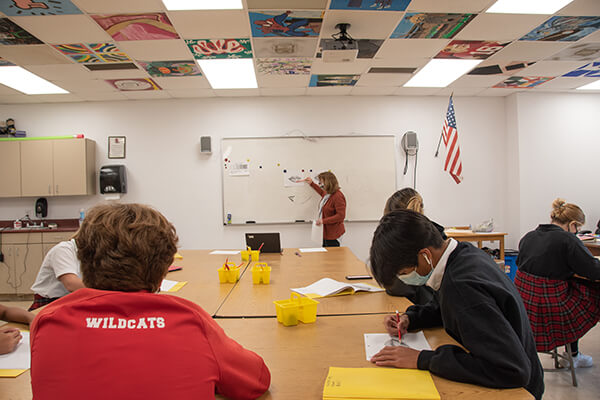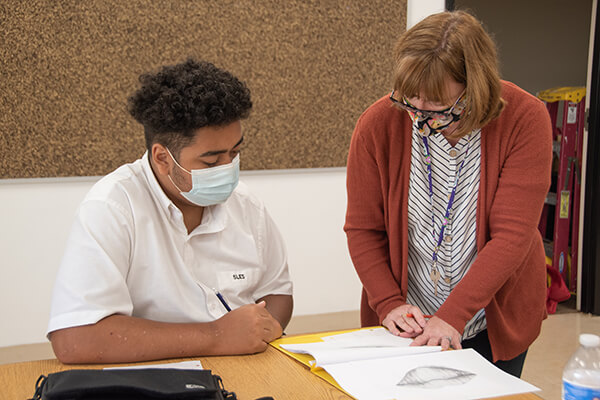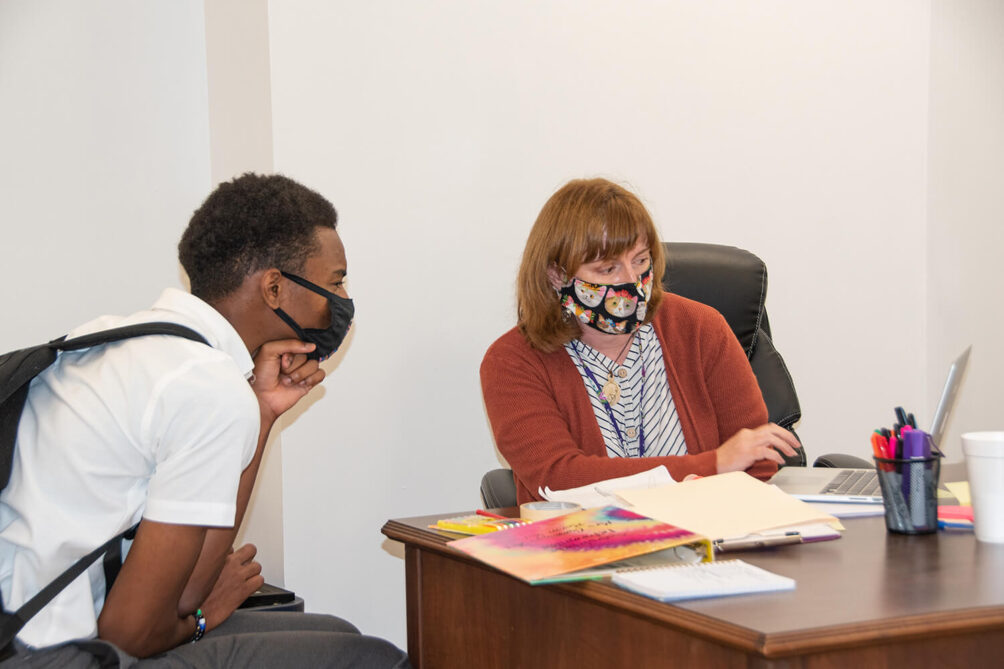More Than an Art Teacher.
Meet St. Luke's newest visual arts teacher, Mrs. Debbie Cummings as she talks to us during National Arts in Education Week.
Mrs. Cummings recently moved to Mobile from Asheville, NC. Welcome Mrs. Cummings, we're so excited to have you at St. Luke's!

St. Luke's: Describe yourself.
Debbie Cummings: Busy, Creative, Calm
SL: Discuss your prior history with fine and performing arts?
DC: This is my 19th year teaching art. I have taught all grade levels from preschool-adults. I have also taught theatre.
SL: What led you to want to become a teacher in the fine or performing arts?
DC: I was active throughout MS and HS in theatre and the visual arts. I saw the impact the arts had on students in helping us to find connections with a variety of people, the school and community. It also built confidence and helped me to develop speech and leadership skills. The teachers that committed so much of their time and energy to provide those opportunities for the students were some of the main influences of my middle school and high school career which carried over into my college years. I wanted to be able to provide those same opportunities for others.
SL: Why should the fine and performing arts play a key role in a student’s education?
DC: It can connect students from different backgrounds. It helps to broaden the perspective of the world and your community. It develops collaborative, creative and critical thinking skills that can be applied in a variety of career fields.
SL: Do you collaborate with other departments within the school? If so, how?
DC: Yes, by working with teachers on curriculum development that include arts integration. Helping teachers to develop ideas of how to incorporate the arts into specific lessons.
SL: How do you connect fine and performing arts to other subjects?
DC: I think it is important for students to see how the arts are integrated into all areas around them. No matter where you go or what you do, you can see and hear influences from the arts. Many of the projects will have connections with content from the student’s core curriculum.

SL: How do you promote interest in fine and performing art classes with the student body?
DC: Since I am new, this will be an ongoing process. Hopefully through community connections that showcase art, opportunities to participate in a variety of mediums and approaches to art, displays of their peer’s artwork.
SL: What is your teaching method/philosophy?
DC: I am a big proponent of arts integration. I feel that the process of making art is as important as the product at the middle school and high school levels.
SL: How do students know they belong in your program/class?
DC: My class is set up as a safe place to make magnificent mistakes. I would rather a student make a myriad of mistakes by trying rather than not make mistakes from giving zero effort.
SL: Describe the trajectory, vision, future, etc of St. Luke’s fine and performing arts program.
DC: As a team we are looking forward to working together to promote the SLES art program throughout the school and regional community and to help students find a place where they feel comfortable and confident in expressing themselves creatively.
Thanks Mrs. Cummings for helping us celebrate National Arts in Education Week!

